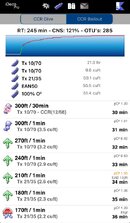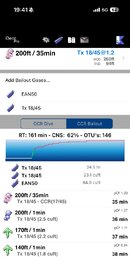We aren't moving much on the bottom either, we need to dpv to get to the bottom. We've had surface currents strong enough that even at full speed we can't make it to the down line from 50 or so feet downstream. Obviously we try to not get downstream in the first place, but it is challenging when the wind and current aren't going in the same direction. All it takes is a bad gear handoff from the boat, or a diver fiddling with something at the surface before getting on the trigger and we are stuck scootering back upstream.We haven't really made a decision one way or the other on scooters - because the wreck site is reasonably small we won't be going horizontally very far during the work stage of the dive, so we are thinking that if divers can't get back to the trapeze etc then they will put up an SMB and drift deco with the boat following. Having said that there have been some sketches floating around of a wet submersible that takes advantages of the big leaps forward in battery and electric thruster designs - fit something like that with depth hold capability like ROV's have and life gets better!
Totally awesome project - the dream is that we might find the oldest mariner's astrolabe that has ever been found - time will tell.
All our deco is drifting. We contemplated doing a trapeze, but after dealing with the currents, abandoned that idea.





